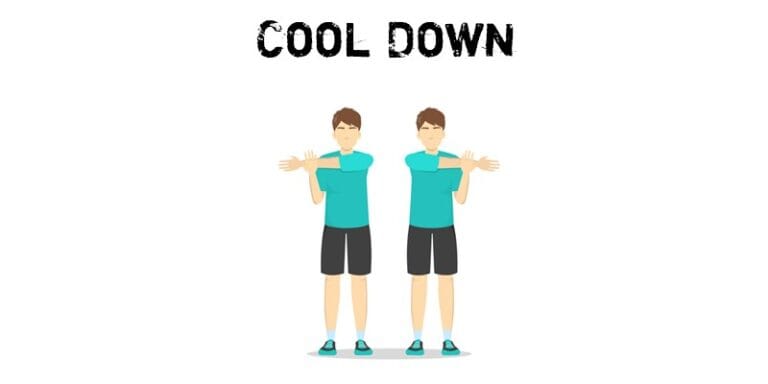Steady-state cardio involves aerobic exercise for prolonged periods of time, at a low to moderate intensity. Examples are walking, jogging, running and cycling. You either love or hate it, but it’s an effective way to lose weight and keep fit. In this guide, we will look at each method in more detail and the benefits behind them. If you are just starting, we recommend you ease into the intensity and build your way up.
Topics covered in this guide:
- Cardio & Weight Loss
- The Methods
- Running Benefits
Cardio & Weight Loss
ACSM recommend 30 minutes of moderate-intensity activity, 5 times per week, in order to maintain a healthy weight. This amounts to 150 minutes of moderate activity per week. You can aim for anywhere between 40-65% of your max heart rate. Ultimately the intensity and time come down to you, but the above guidelines are a great starting point.
The Methods
1. Walking
Walking to many may not seem like exercise but you would be surprised at the impact it can have. For example, you can burn around 100 calories after walking for half an hour. Depending on your job and lifestyle you may walk a lot naturally which is great as you reap the benefits without realising it. If you are constantly sitting at your desk, you should actively look for opportunities to walk where you can. Exposure to sunlight during a walk will also help you to get some vitamin D.
A great opportunity for walking is during your lunch breaks. As they form part of your daily routine at work, you should make the most of this time. Another option is to take the stairs rather than using the lift – as they say, it’s the small things which make the biggest difference!
2. Jogging
To get the best weight loss results, combine jogging with high-intensity workouts. Read more about HIIT workouts here.
Jogging is the most common form of cardiovascular exercise since it can be maintained for a long period of time and helps to promote weight loss. To keep it simple, you just need to burn more calories than you consume to lose weight. Assess your macronutrient intake along with your body type to see how many calories you need to burn through jogging to get results. You could burn around 300 calories with 30 minutes of jogging, however, jogging for hours on end can take its toll on your joints.
3. Running
Of the three methods, running is the most effective way to lose weight because it requires more energy and burns more calories. It’s great for developing muscles as well as improving your overall cardiovascular health. There are a number of ways you can incorporate running into your weekly training plan, such as warm-up, post-workout or sprinting.
One of the most effective methods of running is sprinting. An example workout which uses sprinting as an exercise is HIIT. You should aim to include running at least twice a week but ensure a 3-4 day gap to let your muscle and joints recover.
4. Gym Equipment
Steady-state cardio can also be achieved on gym equipment if you apply the same principles as above. You can use cycles, cross trainers, rowers and step machines. These exercises have a lower impact on your body than jogging or sprinting, which makes them safer for your joints. Cycling and steps will also build up the muscles in your legs.
In the winter months when it gets colder and darker outside, the gym is a great alternative and a more comfortable setting. If you have space, you can also buy equipment for your home. Please visit our store to see our very own range of cardiovascular machines.
 Image Credit: Karl Solano | Pexels
Image Credit: Karl Solano | Pexels
Benefits Of Walking, Jogging and Running
There are numerous physical and mental health benefits which you can gain from running:
Physical Health Benefits
1. Improved Cardiovascular Performance
Your cardiovascular performance improves as your heart and lungs are forced to work harder. This helps them to grow and adapt to the stresses you put on them so they get stronger.
2. Muscle Development
Walking, jogging, running are great ways to develop the muscles in your body as they are activated through different movements and intensity levels.
3. Improved Blood Flow
Your body will benefit from improved blood flow as your heart gets stronger and starts to pump blood around the body faster. This improved blood flow carries more oxygen to your muscles, allowing them to work longer.
4. Improved Metabolism
Working out activates your metabolism which is the process in which your body converts food into energy. This energy is then used to burn calories which can lead to weight loss. Any unused energy is stored as fat in the body for future use You will also find that over time your body’s metabolism works for longer which means you burn calories even after you finish your workout. This explains why after a run you can feel more hungry than normal.
 Image Credit: RF._. studio | Pexels
Image Credit: RF._. studio | Pexels
Mental Health Benefits
1. Increase In Confidence
Exercises such as jogging and running are well-known contributors to increased confidence levels. You may have set yourself a goal to run a marathon, and after completing this it can give you a great sense of achievement. This will boost your confidence and encourage you to continue with your fitness journey.
You may also notice an increase in your self-esteem, which can lead to finding new challenges. An example of this is Tough Mudder, which is a series of obstacles courses designed to test your strength, fitness, mental energy and teamwork. Completing this can be rewarding.
2. Lower Anxiety Levels
Going for a run is one of the best ways to reduce anxiety levels and improve your mental health. You can experience something which is known as the ‘runners high’, this happens after finishing a long period of aerobic exercise (usually 30 minutes upwards). The reason for this is linked to hormones which the body releases known as endorphins. Endorphins are known to improve your mood, making you feel happy and reduce depression. Combining these effects together can reduce your anxiety levels.




